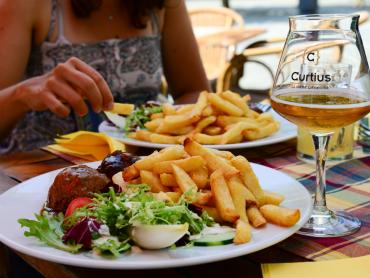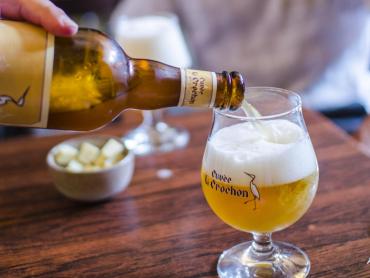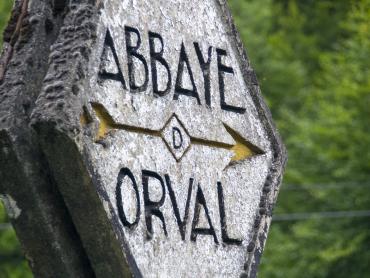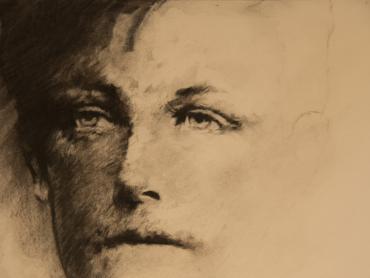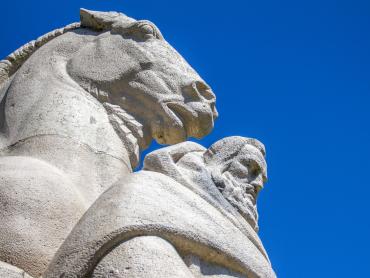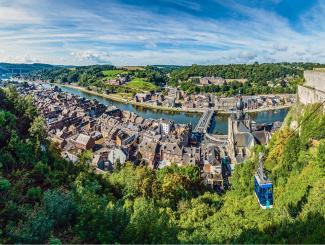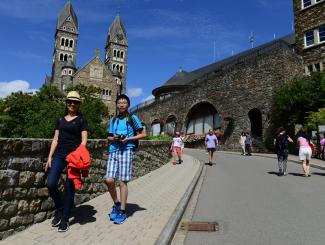the Vennbahn: ON THE ROOF OF BELGIUM
The Vennbahn ("Fen Railway" in German) was a railway line opened in 1889 on what was then German territory. It ran around 75 km south from Aachen across the Hohes Venn (known as the “Hautes Fagnes” in Belgium, meaning “High Fens”) via Raeren, Monschau, Waimes, St Vith, Burg-Reuland and Troisvierges to Trois-Ponts. It was built to transport coal, iron ore and industrial workers between the Rothe Erde industrial area near Aachen and the north of Luxembourg.
Under the Treaty of Versailles at the end of the First World War, the line and its track were ceded by Germany to Belgium. In 1940, following the German invasion of France in the Second World War, it was seized back by the Germans, but was returned to Belgium in 1945. Many of the line’s bridges and tunnels had been badly damaged by air raids during the Battle of the Ardennes.
By the 1960s, the industries served by the railway had begun to decline and the track became increasingly unstable due to mine subsidence. Part of the line was closed in 1961 and buses replaced the trains. In 1991, steam-hauled passenger trains for tourists began to run over part of the line, but this ceased in 2004. Pedal-railbikes were introduced on the track between Monschau and Sourbrodt in 2004, and in 2007 the decision was taken to convert most of the line to a long-distance cycle route, as part of the RAVeL and Voies Vertes networks.
Today, the Vennbahn Cycle Route runs from Aachen in Germany through Belgium to Troisvierges in Luxembourg. Its 125km have been divided into 6 stages of around 20km each, and have average gradients of just 2%. Gleaming steel rails and creosote-darkened sleepers have made way for relaxed cycle touring and hiking all along this “green ribbon”.
There are many interesting historic buildings in Aachen: its historic centre has been designated a UNESCO World Heritage Site and it was the capital of Charlemagne’s empire. In the suburbs of Aachen is the former Kornelimünster Abbey, now a parish church. At Raeren, the end of the first stage, is a pottery museum.
The second stage runs from Raeren to Monschau. Mützenich, a village close to the German-Belgian border near Monschau was a hotbed of coffee smuggling between 1948 and 1952: the retail price of coffee in Germany was three times its price in Belgium and it is estimated that at least 1,000 tonnes of coffee crossed the border hidden in cars or in cyclists’ backpacks. The practice was ended by the trial of 47 of the village’s inhabitants in Cologne in 1952. North-East of Monschau is the Rursee lake, formed by a dam across the River Rur built in 1939. Monschau itself is a charming small town, with many half-timbered buildings and a castle, whose grounds host an open-air Classical music festival each year. It also has a brewery museum, a traditional coffee roaster and a nineteenth-century mustard factory that can be visited.

The third stage crosses into Belgium and the Hautes-Fagnes-Eifel Nature Park, running between the Robertville and Bütgenbach lakes (both with facilities for water sports, hiking and mountain-biking) to end at Waimes, near Malmédy.
The fourth stage continues south to end at St. Vith, once an important railway junction, giving it vital strategic importance during the Battle of the Ardennes in the winter of 1944-1945. Despite stubbornly resisting German attacks for a few days, the American garrison was heavily outnumbered and had to retreat. During the German occupation of the town it was almost totally destroyed by Allied air raids and its ruins were re-taken by the Allies on 23 January 1945.
The fifth stage continues south to the small town of Burg Reuland, with its imposing castle, on the Luxembourg border. The sixth and final stage runs south-west from Burg Reuland along the beautiful valley of the River Our before swinging west to end at Troisvierges, a small town that profited economically from the arrival of the Vennbahn railway, but also experienced the bad side of improved transport links: on 1 August 1914, a detachment of German troops arrived by train and occupied the town, in violation of Luxembourg’s neutrality, this marking the start of the First World War on the Western Front.
More information
Vennbahn Coordination Office
c/o Tourism Agency of East Belgium NPI
Hauptstrasse 54, 4780 Sankt Vith, België
vennbahn@ostbelgien.eu
www.vennbahn.eu



